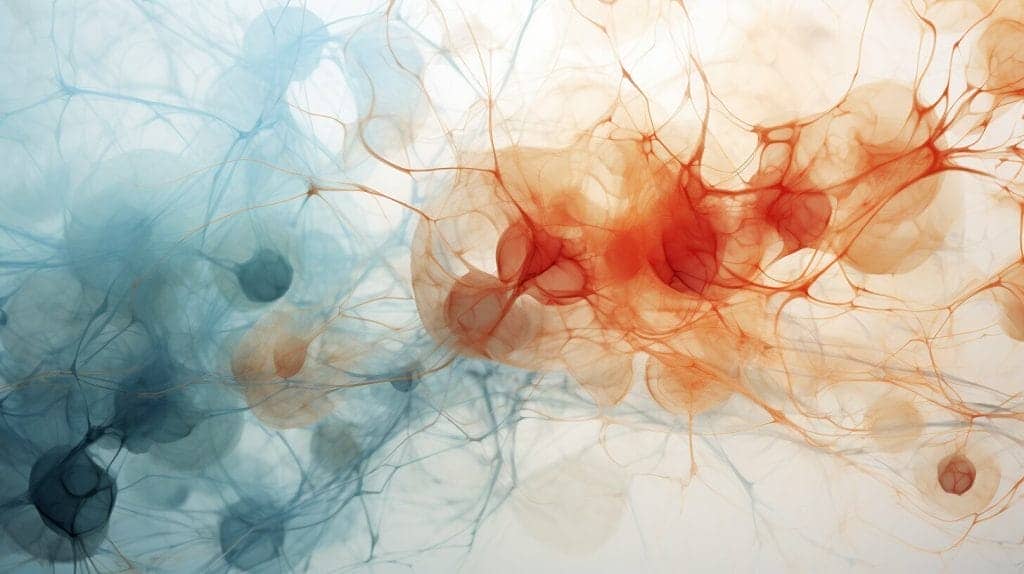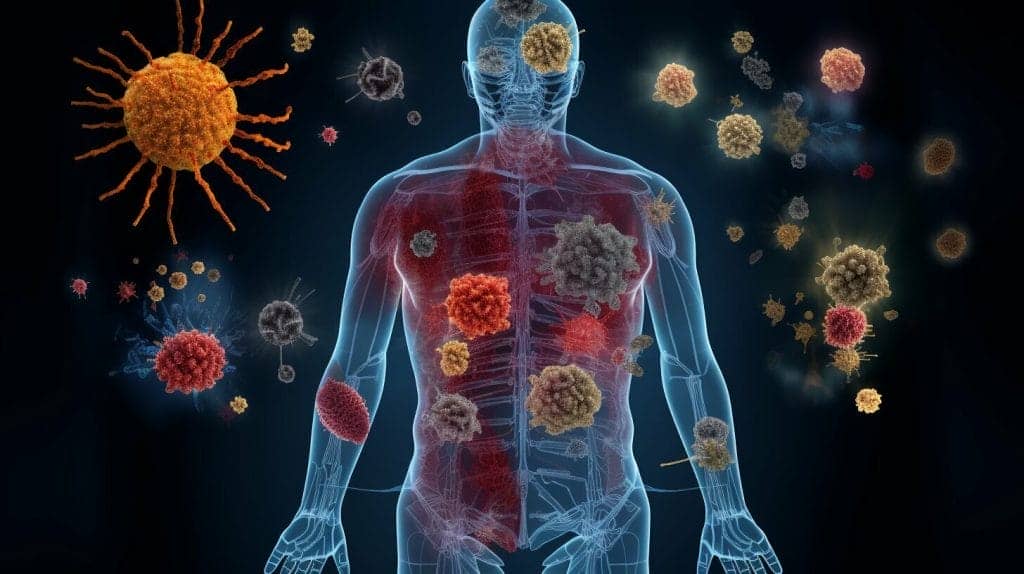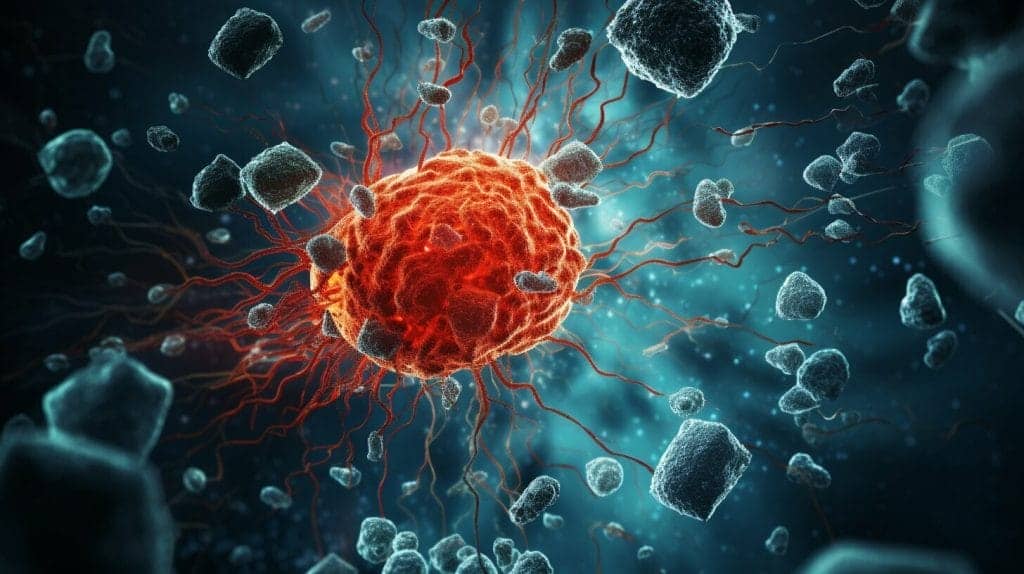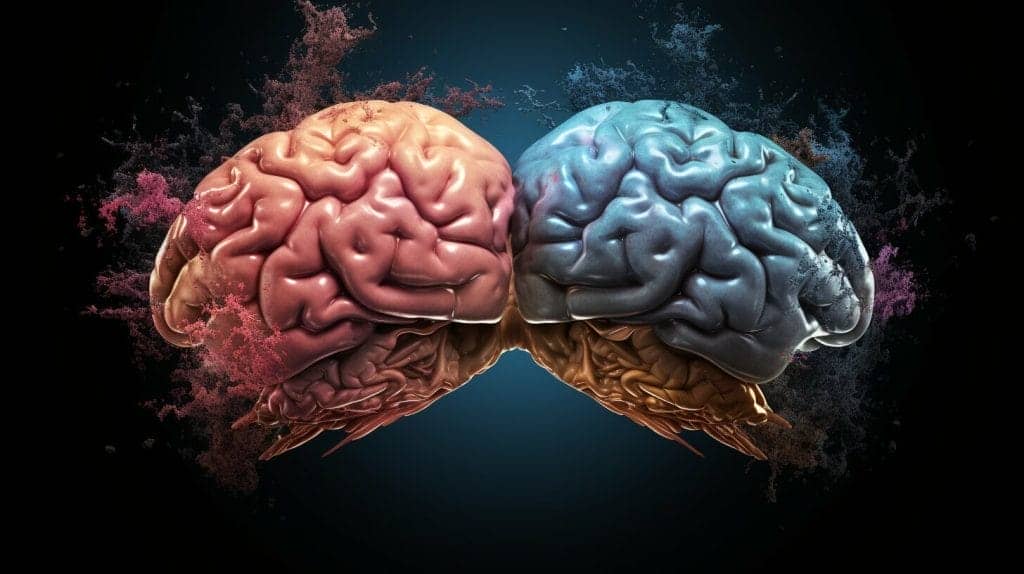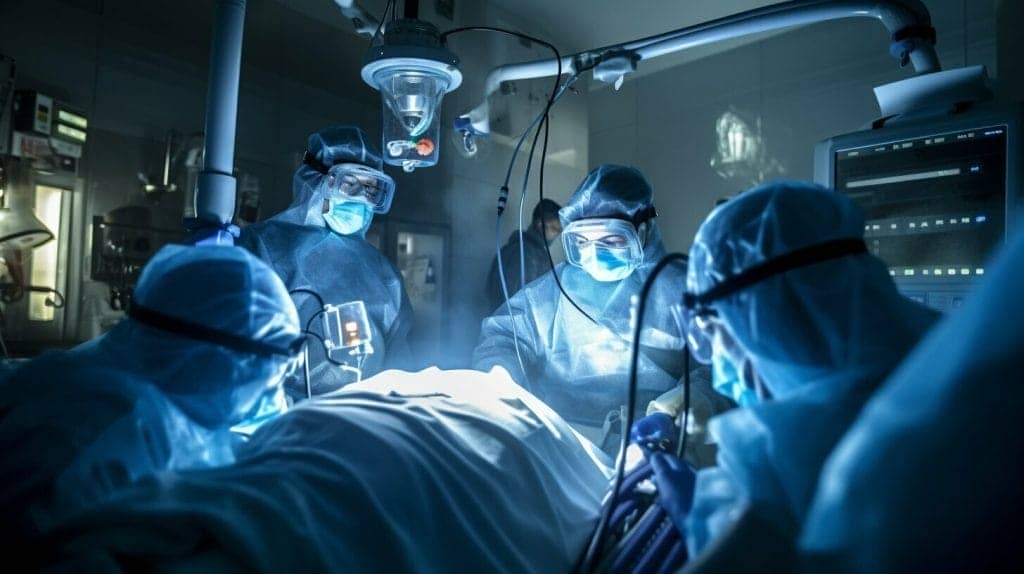The COVID-19 pandemic has had a massive impact on the world, affecting virtually every aspect of daily life. As researchers continue to investigate the virus and develop treatments, new questions have arisen regarding its classification. One such question is whether or not COVID-19 can be classified as a retrovirus. In this article, we will delve deeper into the nature of retroviruses and the similarities between COVID-19 and retroviruses to determine if there is a relationship between the two.
Key Takeaways:
- The classification of retroviruses in virology.
- The key similarities between COVID-19 and retroviruses.
- The retroviral elements in COVID-19 and its replication mechanisms.
- The holistic approach at Oasis Medical Institute in Tijuana, Mexico.
- Other considerations in COVID-19 treatment and continuing research on the retroviral connections.
Understanding the Classification of Retroviruses
Retroviruses belong to a family of viruses that are characterized by their unique mode of replication, which involves the reverse transcription of RNA into DNA. This makes them distinct from other types of viruses that replicate using DNA as their genetic material. Retroviruses are classified based on their genome structure, mode of replication, and other features such as the presence of specific proteins.
There are three main genera of retroviruses: simple retroviruses, complex retroviruses, and spumaviruses. Simple retroviruses have a relatively small genome and usually only infect animals, while complex retroviruses have a larger genome and can infect both animals and humans. Spumaviruses, on the other hand, have a distinct mode of replication and are not typically associated with disease in humans.
Understanding the Classification of Retroviruses
Retroviruses are classified based on their genome structure, mode of replication, and other features such as the presence of specific proteins. There are three main genera of retroviruses: simple retroviruses, complex retroviruses, and spumaviruses.
| Retrovirus Type | Characteristic Features |
|---|---|
| Simple retroviruses | Small genome, animal hosts only |
| Complex retroviruses | Larger genome, animal and human hosts |
| Spumaviruses | Distinct mode of replication, typically not associated with human disease |
Examining the Similarities between COVID-19 and Retroviruses
COVID-19 has raised questions about its classification as a retrovirus due to several observed similarities between its behavior and that of retroviruses. One of the main similarities is the ability of both viruses to insert their genetic material into host cells.
Another feature that COVID-19 shares with retroviruses is the ability to use the host’s cellular machinery to replicate. Retroviruses are unique in their ability to convert their RNA genome into DNA through the enzyme reverse transcriptase. This process allows the virus to integrate its genetic material into the host cell’s DNA, enabling it to use the host’s cellular machinery to produce more viral particles. Similarly, COVID-19 is also known to hijack the host’s RNA and protein synthesis machinery to produce more copies of the virus.
Furthermore, both retroviruses and COVID-19 can undergo genetic mutations, leading to the emergence of new strains. Scientists have identified several new strains of COVID-19 that have emerged during the pandemic, some of which have exhibited increased transmissibility and virulence, much like the new strains of retroviruses that have emerged in the past.
Some experts contend that the similarities between COVID-19 and retroviruses are superficial, and that COVID-19 exhibits key differences in its genetic makeup and replication mechanisms that preclude it from being classified as a retrovirus. Nevertheless, further research is needed to fully understand the nature of COVID-19 and its relationship to retroviruses.
The Retroviral Elements in COVID-19
Scientists have observed several retroviral-like properties in COVID-19, leading to discussions about whether it should be classified as a retrovirus. One notable feature is the presence of a single-stranded RNA genome, which retroviruses also possess. However, COVID-19 has a distinct genetic sequence that sets it apart from retroviruses.
Another similarity is the presence of a protein called “spike” that COVID-19 utilizes to enter host cells. This protein bears a resemblance to the envelope protein found in retroviruses, which allows them to attach to and enter host cells. Additionally, COVID-19 has been shown to integrate its genetic material into the host cell’s DNA, a hallmark behavior of retroviruses.
Despite these similarities, some scientists argue that COVID-19’s replication mechanisms do not follow the same process as retroviruses. Retroviruses are known to reverse transcribe their RNA into DNA before integrating it into the host cell’s genome, while COVID-19 does not appear to carry out reverse transcription in the same way.
Overall, while COVID-19 exhibits some retroviral-like properties, its classification as a retrovirus remains a topic of debate among virologists.
Exploring Retroviral Replication Mechanisms in COVID-19
One of the key similarities between COVID-19 and retroviruses is their ability to replicate within host cells. While retroviruses use an enzyme called reverse transcriptase to convert their RNA genome into DNA, COVID-19 has an RNA genome that is directly translated by host cell machinery.
However, recent research has suggested that COVID-19 may also utilize a retroviral-like mechanism known as ribosomal frameshifting, which allows for the production of multiple proteins from a single RNA strand. This process is similar to how retroviruses produce their proteins and could potentially contribute to the pathogenesis of COVID-19.
Studies have also identified the presence of certain viral proteins in COVID-19 that exhibit functional similarities to those found in retroviruses. For example, the nucleocapsid protein of COVID-19 has been shown to interact with host cell RNA processing proteins, similar to how the capsid protein of retroviruses interacts with cellular machinery.
Research Supporting Retroviral-Like Behavior in COVID-19
A recent study published in the journal Nature Microbiology identified a sequence in the COVID-19 genome that bears similarity to the pol gene of retroviruses. The authors hypothesized that this sequence may play a role in the virus’s replication and virulence.
Another study published in the Proceedings of the National Academy of Sciences demonstrated that COVID-19 can integrate its genetic material into the genome of infected cells, similar to how retroviruses can integrate their genetic material into host DNA. This process, known as reverse transcription, may contribute to the virus’s ability to persist within the body and evade the immune system.
While further research is needed to fully understand the extent of the retroviral-like behavior exhibited by COVID-19, these findings suggest that the virus may have more in common with retroviruses than previously thought.
Transmission of COVID-19 and Retroviral Mechanisms
The transmission of COVID-19 mainly occurs through respiratory droplets produced when an infected person talks, coughs, or sneezes. These droplets can land in the mouths or noses of people nearby or be inhaled into the lungs. Another way the virus can spread is through contact with contaminated surfaces and touching the face, but this is considered less common.
Despite the different modes of transmission, COVID-19 shares some similarities with retroviruses in terms of their replication mechanisms. For example, retroviruses such as HIV have the ability to integrate their genetic material into the host cell’s genome, essentially becoming a permanent part of the infected cells. Similarly, recent studies suggest that COVID-19 may also have retroviral elements that allow it to integrate into the host cell genome, although this has not been confirmed yet.
While further research is needed to confirm whether COVID-19 is indeed a retrovirus, the similarities in mechanisms and transmission provide valuable insights into how the virus operates and potentially how it can be treated. It is important to continue studying the virus and its behavior to develop effective therapies and control its spread.
The Holistic Approach at Oasis Medical Institute
Oasis Medical Institute, a leading integrative medical center in Tijuana, Mexico, offers a holistic approach to treating COVID-19. Led by medical director Dr. Francisco Contreras MD, the institute combines conventional medicine with complementary and alternative therapies to provide personalized and comprehensive treatment programs.
At Oasis Medical Institute, patients receive customized care that addresses not only the physical symptoms of COVID-19, but also the emotional, mental, and spiritual aspects of their health. The institute’s team of experts includes physicians, naturopaths, nutritionists, and counselors who work collaboratively to optimize each patient’s recovery.
Dr. Francisco Contreras MD, a renowned pioneer in integrative medicine, has over 35 years of experience in treating cancer and other chronic conditions. He is a board-certified medical oncologist who has authored several books on integrative medicine and cancer prevention. Under his guidance, Oasis Medical Institute has become a trusted destination for patients seeking alternative approaches to their health concerns.
If you are interested in exploring Oasis Medical Institute’s COVID-19 treatment program, you can book a consultation with one of their specialists. The treatment program includes a range of therapies, such as intravenous vitamin C, ozone therapy, hyperbaric oxygen therapy, and nutritional supplementation. Each patient’s program is tailored to their specific needs and condition.
To learn more about Oasis Medical Institute’s COVID-19 treatment program, you can call their toll-free number at 866-868-1992.
The Integrative Medicine Approach to COVID-19 at Oasis Medical Institute
Oasis Medical Institute in Tijuana, Mexico, provides an integrative approach to COVID-19 treatment by combining conventional medicine with complementary and alternative therapies. Their COVID-19 treatment program is guided by medical director Dr. Francisco Contreras MD, a renowned expert in integrative cancer treatments.
At Oasis Medical Institute, COVID-19 patients receive personalized treatment plans tailored to their specific needs. The program includes a range of therapies, such as nutrition counseling, herbal and vitamin supplements, immune-boosting therapies, ozone therapy, hyperbaric oxygen therapy, and more. These complementary therapies work in conjunction with conventional medical interventions, such as medication and oxygen therapy, to enhance the patient’s overall well-being and promote a faster recovery.
The Comprehensive Treatment Approach (CTA)
Oasis Medical Institute’s Comprehensive Treatment Approach (CTA) takes a multidisciplinary approach to COVID-19 treatment. Patients receive a range of therapies that target different aspects of the disease, such as reducing inflammation, modulating the immune response, boosting the body’s natural defenses, and improving lung function. The CTA also includes psychological support, nutritional guidance, and stress reduction techniques to help patients manage the physical and emotional challenges of the disease.
The CTA is designed to help COVID-19 patients recover faster, reduce the risk of long-term complications, and improve their overall quality of life. The program is tailored to each patient’s individual needs, ensuring that they receive the most effective treatments for their unique situation.
Booking a Consultation
Individuals who are interested in learning more about Oasis Medical Institute’s COVID-19 treatment program can book a consultation with one of their medical professionals. During the consultation, patients can discuss their symptoms, medical history, and treatment goals, and receive personalized recommendations for their care.
To schedule a consultation or learn more about the program, individuals can call 866-868-1992.
The COVID-19 Treatment Program at Oasis Medical Institute
For those seeking comprehensive treatment for COVID-19, Oasis Medical Institute in Tijuana, Mexico offers an integrative approach that incorporates conventional medicine with complementary and alternative therapies.
Under the guidance of the medical director, Dr. Francisco Contreras MD, patients receive personalized treatment plans that address their individual needs and circumstances. This holistic approach empowers patients to take an active role in their own healing, while benefiting from the expertise of experienced medical professionals.
To learn more about Oasis Medical Institute’s COVID-19 treatment program and book a consultation, interested individuals can call 866-868-1992.
Other Considerations in COVID-19 Treatment
While an integrative approach to COVID-19 treatment may provide a comprehensive and holistic approach, it is important to note that other factors should be considered in the management of this illness.
First and foremost, vaccination is currently the most effective solution to curb the spread of the virus and prevent severe illness. Therefore, individuals should prioritize receiving a COVID-19 vaccine that is approved by the FDA and recommended by their healthcare provider.
In addition, adherence to public health guidelines such as wearing masks, practicing social distancing, and washing hands regularly can further prevent the spread of the virus.
Furthermore, ongoing research efforts are being made to identify and develop effective therapies for COVID-19. While a comprehensive approach to healthcare is necessary, conventional medical interventions may still play a significant role in the treatment and management of COVID-19.
Therefore, individuals should consult with their healthcare provider and follow the recommended protocols for COVID-19 prevention and treatment.
Continuing Research on COVID-19 and Retroviral Connections
The investigation into the relationship between COVID-19 and retroviruses is ongoing, with scientists and medical professionals working to better understand the nature of the virus and its potential connections to retroviral behavior.
Recent studies have explored the potential involvement of retroviral elements in the genomic structure of COVID-19, suggesting that the virus may exhibit certain characteristics similar to those of retroviruses. For example, research has identified retroviral-like sequences within the SARS-CoV-2 genome, which may play a role in replication and transmission mechanisms.
Other studies have investigated the potential use of retroviral therapies in the treatment of COVID-19, drawing on the similarities in behavior and mechanisms between the two types of viruses. These studies are still in the early phases, and more research is needed to determine the safety and efficacy of such treatments.
As the global scientific community continues to work towards a better understanding of COVID-19 and its potential connections to retroviruses, ongoing research efforts will be critical in informing future treatment and prevention strategies.
Implications and Future Directions
Understanding the relationship between COVID-19 and retroviruses has important implications for future research and medical interventions. If COVID-19 is indeed classified as a retrovirus, this could mean that existing retroviral drugs may be effective in treating the disease or that new drugs targeting retroviral elements of the virus could be developed. Additionally, insights into the retroviral behavior of COVID-19 could inform strategies for preventing its transmission.
Further research is needed to fully elucidate the nature of COVID-19 and its relationship to retroviruses. Ongoing studies in virology and immunology are examining the genetic sequences, protein structures, and replication mechanisms of the virus to better understand its behavior and potential vulnerabilities. Advances in technology and techniques for studying viruses, such as CRISPR-Cas9 gene editing and single-cell sequencing, may also offer new avenues for research.
Moreover, the holistic approach to COVID-19 treatment practiced at Oasis Medical Institute highlights the potential benefits of integrative medicine in combating the disease. By combining conventional medical interventions with complementary and alternative therapies, such as herbal medicine, acupuncture, and nutritional counseling, patients may experience improved outcomes and quality of life.
As the global community continues to grapple with the COVID-19 pandemic, it is essential to stay informed and follow evidence-based guidelines for prevention and treatment. While research on the retroviral connections of COVID-19 remains in its early stages, it offers a promising avenue for advancing our understanding of the virus and developing effective therapies.
Conclusion
As the world continues to grapple with the COVID-19 pandemic, there remains much to learn about the nature of the virus. While the question of whether COVID-19 can be classified as a retrovirus is still a topic of debate, there are certainly several similarities and retroviral-like elements found within the virus.
As we explore the potential connections between COVID-19 and retroviruses, it is important to approach treatment with a balanced perspective. While conventional medicine has made great strides in treating the virus, alternative and complementary therapies can also play a role in providing holistic care for patients.
At Oasis Medical Institute in Tijuana, Mexico, individuals can find an integrative approach to COVID-19 treatment under the guidance of medical director, Dr. Francisco Contreras MD. Their comprehensive treatment program combines conventional medicine with complementary and alternative therapies to provide a well-rounded approach to patient care.
As the scientific community continues to research and investigate the nature of COVID-19, there remains hope that new discoveries will lead to more effective treatments and ultimately, a resolution to the pandemic.
FAQ
Q: Is COVID a Retrovirus?
A: No, COVID-19 is not classified as a retrovirus.
Q: What are retroviruses?
A: Retroviruses are a family of RNA viruses that have the ability to convert their RNA genome into DNA using a reverse transcriptase enzyme.
Q: Are there similarities between COVID-19 and retroviruses?
A: There are some similarities between COVID-19 and retroviruses in terms of certain characteristics and behaviors exhibited by the virus.
Q: What retroviral elements are found in COVID-19?
A: COVID-19 exhibits certain genetic sequences and protein structures that resemble those found in retroviruses.
Q: Does COVID-19 replicate like a retrovirus?
A: While there are some similarities in replication mechanisms, COVID-19 does not follow the exact replication mechanisms of retroviruses.
Q: Are there similarities in transmission mechanisms between COVID-19 and retroviruses?
A: There may be some similarities in the transmission mechanisms of COVID-19 and retroviruses, but further research is needed to fully understand the connections.
Q: What is the holistic approach at Oasis Medical Institute?
A: Oasis Medical Institute in Tijuana, Mexico, takes a holistic approach to COVID-19 treatment, combining conventional medicine with complementary and alternative therapies.
Q: What is the COVID-19 treatment program at Oasis Medical Institute?
A: Interested individuals can book a consultation or enroll in the COVID-19 treatment program at Oasis Medical Institute. For more information, call 866-868-1992.
Q: What other considerations are important in COVID-19 treatment?
A: In addition to treatment programs, vaccination, adherence to public health guidelines, and ongoing research efforts are crucial considerations in the treatment of COVID-19.
Q: What is the current research on COVID-19 and its connection to retroviruses?
A: Ongoing research is being conducted to explore the relationship between COVID-19 and retroviruses and to further understand the nature of the virus.
Q: What are the implications and future directions for COVID-19 research?
A: The findings on the nature of COVID-19 in relation to retroviruses can guide future research and potentially influence medical interventions for the virus.
Dr. Francisco Contreras, MD is a renowned integrative medical physician with over 20 years of dedicated experience in the field of integrative medicine. As the Medical Director of the Oasis of Hope Hospital in Tijuana, Mexico, he has pioneered innovative treatments and integrative approaches that have been recognized globally for the treatment of cancer, Lyme Disease, Mold Toxicity, and chronic disease using alternative treatment modalities. Dr. Contreras holds a medical degree from the Autonomous University of Mexico in Toluca, and speciality in surgical oncology from the University of Vienna in Austria.
Under his visionary leadership, the Oasis of Hope Hospital has emerged as a leading institution, renowned for its innovative treatments and patient-centric approach for treating cancer, Lyme Disease, Mold Toxicity, Long-Haul COVID, and chronic disease. The hospital, under Dr. Contreras's guidance, has successfully treated thousands of patients, many of whom traveled from different parts of the world, seeking the unique and compassionate care the institution offers.
Dr. Contreras has contributed to numerous research papers, articles, and medical journals, solidifying his expertise in the realm of integrative medicine. His commitment to patient care and evidence-based treatments has earned him a reputation for trustworthiness and excellence. Dr. Contreras is frequently invited to speak at international conferences and has been featured on CNN, WMAR2 News, KGUN9 News, Tyent USA, and various others for his groundbreaking work. His dedication to the medical community and his patients is unwavering, making him a leading authority in the field.
Contreras has authored and co-authored several books concerning integrative therapy, cancer, Lyme Disease and heart disease prevention and chronic illness, including "The Art Science of Undermining Cancer", "The Art & Science of Undermining Cancer: Strategies to Slow, Control, Reverse", "Look Younger, Live Longer: 10 Steps to Reverse Aging and Live a Vibrant Life", "The Coming Cancer Cure Your Guide to effective alternative, conventional and integrative therapies", "Hope Medicine & Healing", "Health in the 21st Century: Will Doctors Survive?", "Healthy Heart: An alternative guide to a healthy heart", “The Hope of Living Cancer Free”, “Hope Of Living Long And Well: 10 Steps to look younger, feel better, live longer” “Fighting Cancer 20 Different Ways”, "50 Critical Cancer Answers: Your Personal Battle Plan for Beating Cancer", "To Beat . . . Or Not to Beat?", and “Dismantling Cancer.”





